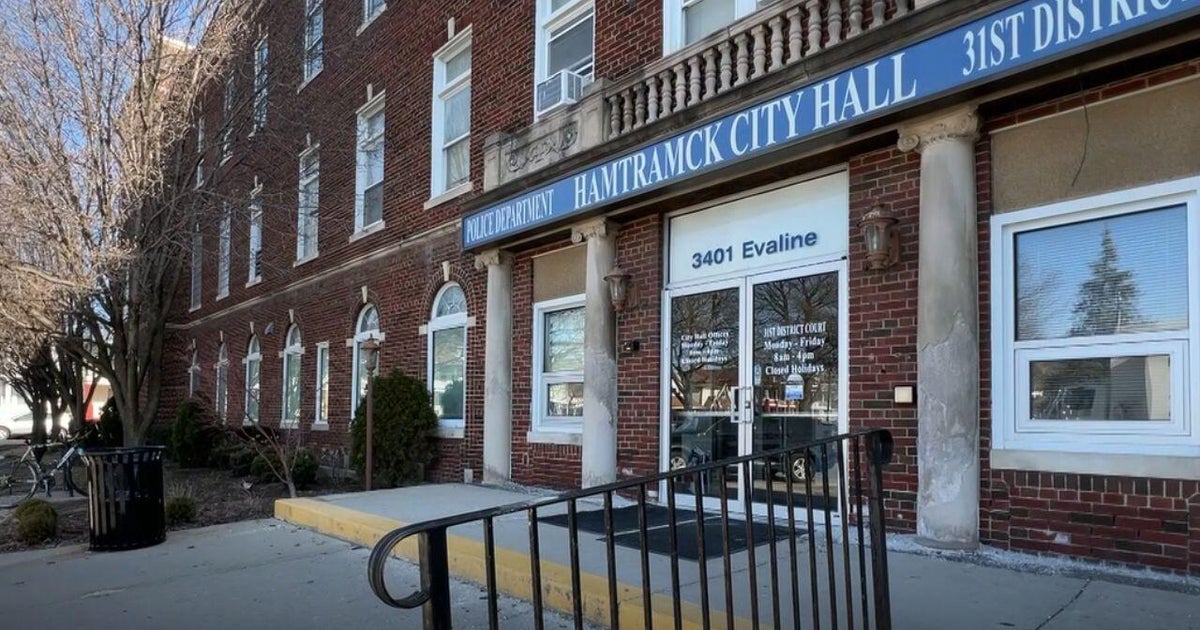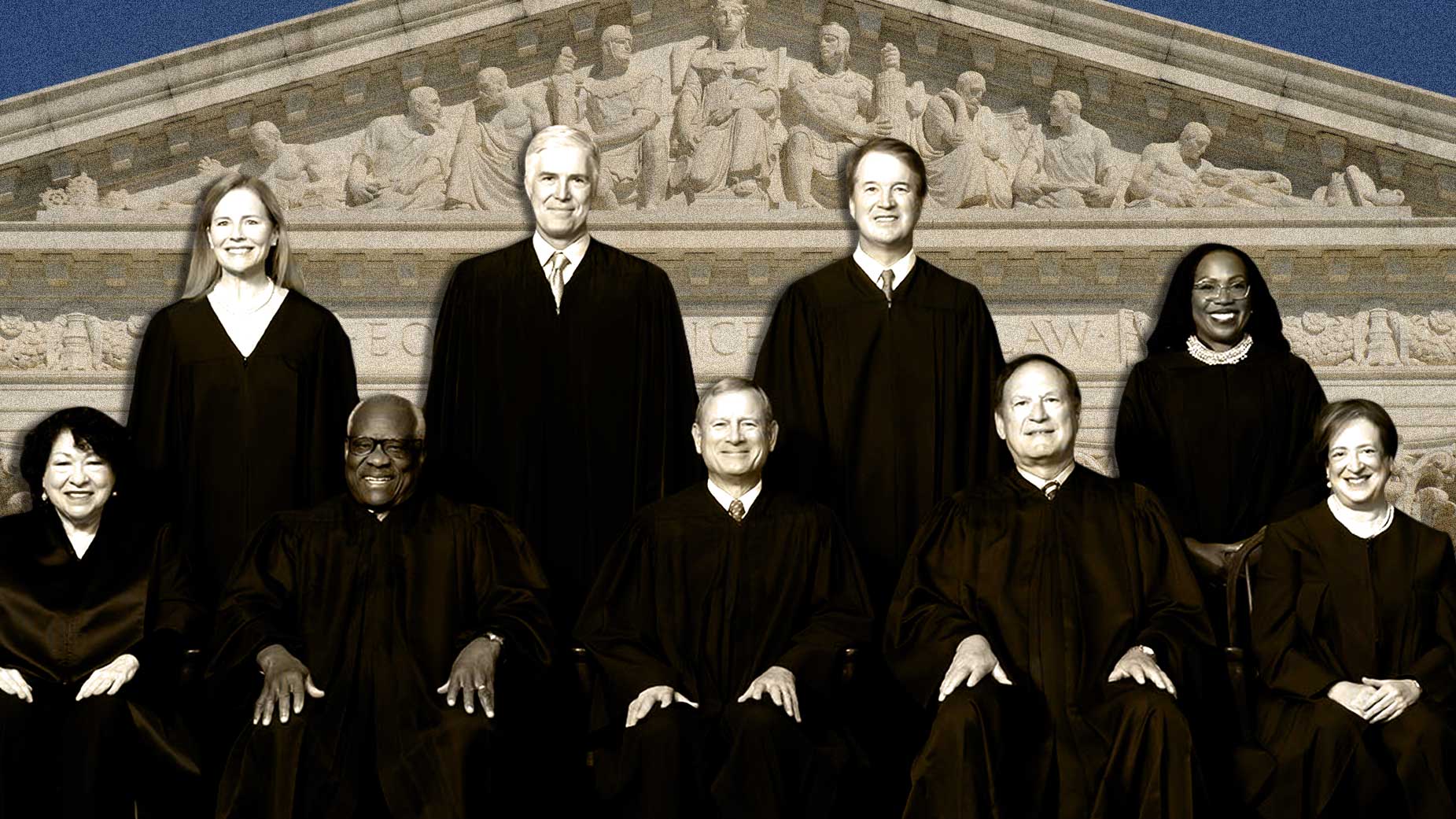Supreme Court shifts slowly to the right in first term with expanded conservative majority
Washington — All eyes were on the Supreme Court this term as it ushered in a new era with an expanded conservative majority and a full third of its membership having been appointed by former President Donald Trump.
While the high court's term concluded with two high-profile decisions that split along ideological lines — the first upholding a pair of Arizona election rules, which sparked a fiery dissent from Justice Elena Kagan, and the second striking down a California donor disclosure rule — it also produced a number of rulings that cut across those divisions, bringing a slower start to its conservative transformation than many observers had anticipated.
"This has been a less ideologically riven court than many expected," said Jonathan Adler, a law professor at Case Western Reserve University. "There were five different 5-4 lineups and six different 6-3 lineups, though there were also more 6-3 decisions than 5-4 decisions, driven in part by the ideological balance of the court."
According to statistics compiled by SCOTUSblog, 43% of cases were decided by the court unanimously, and 15% split along ideological lines. Justice Brett Kavanaugh voted in the majority the most among the nine justices, at 97% of the time, followed by Chief Justice John Roberts and Justice Amy Coney Barrett, the court's newest member.
"A court where Justice Kavanaugh is at the center and Chief Justice Roberts is center-left is a very conservative court," said Jessica Levinson, a CBS News legal contributor and professor at Loyola Law School. "Let's also remember that Justice Kavanaugh and Justice Barrett know that everybody is watching them to see if they look like political hacks, and the further they get from their confirmation hearings, potentially the less worried they'll be about how we perceive them."
While Kavanaugh now sits at the court's ideological center, Adler noted Roberts "remains successful at pushing for broader unanimity and narrower opinions than people expected," as demonstrated by the court's decision allowing the Affordable Care Act to stand and in its narrow ruling in a dispute between a Catholic foster care agency and the city of Philadelphia.
In the Obamacare case, the Supreme Court ruled 7-2 to toss out the GOP-led effort to kill the health care law, leaving it intact. In the legal battle that pitted religious liberty against LGBTQ rights, the court unanimously said the city of Philadelphia was wrong to end its foster care contract with Catholic Social Services.
Mark Rienzi, president of the Becket Fund for Religious Liberty who represented the Catholic foster care agency, said the court's decision in favor of his client shows that even in times of sharp political disagreement, the justices can reach consensus on difficult issues.
"In divisive times with a lot of conflict, we see the court over and over again in these religious liberty cases actually coming to strong, supermajority and often unanimous decisions saying this is not a zero-sum game, we really can have liberty for everyone," he said in a call with reporters about the Supreme Court's term.
The court also ruled unanimously that the NCAA cannot limit education-related benefits for student-athletes, and split 8-1 in favor of a Pennsylvania cheerleader who was punished by her high school for posting a profane message to Snapchat.
Adler also observed that a generational split appears to be emerging among the conservative justices in criminal law cases. The younger justices appointed by Mr. Trump, Adler said, "seem more attentive to concerns about overcriminalization" than their older conservative colleagues tapped by former Presidents George H.W. Bush and George W. Bush.
A clear example of that divide came in the case of former Georgia police officer Nathan Van Buren, in which the Supreme Court, in a 6-3 decision, narrowed the reach of a federal computer fraud law that seeks to address hacking and other cyber crimes. Barrett delivered the opinion of the court, and she was joined by the three liberal members of the bench, as well as Justice Neil Gorsuch and Kavanaugh.
The recently wrapped Supreme Court term was closely watched, as it was the first in which the high court boasted a 6-3 conservative majority with Barrett filling the vacancy left by the death of Justice Ruth Bader Ginsburg in September.
While Barrett's appointment brought dire warnings about the future of Obamacare from Democratic senators, those predictions did not come to fruition, and there were few cases argued in which her replacing Ginsburg affected the outcome, Adler said. Instead, Barrett's addition was more acutely felt in emergency applications challenging COVID-19 restrictions brought by houses of worship.
In earlier objections before Ginsburg's death, Roberts joined with the liberal wing of the bench to allow coronavirus restrictions to stay in place. But once Barrett joined the Supreme Court, she provided the fifth vote to bar New York from enforcing pandemic-related rules on houses of worship.
"When you know you can lose Roberts and still get a conservative majority, that changes how the court functions," Levinson said.
The justices are poised to hear several blockbuster cases in their next term beginning in October that could test the Supreme Court's bolstered majority. The high court has agreed to hear a bid from the state of Mississippi to implement a 15-week abortion ban, a Second Amendment challenge to a New York law restricting who can carry concealed handguns in public and a capital case involving Boston Marathon bomber Dzhokhar Tsarnaev.
Waiting in the wings is an appeal from a group of Asian-American students who argue Harvard University discriminated against them with its admissions policies, though the Supreme Court asked the Biden administration last month to weigh in on whether it should hear the affirmative action case.
"It's going to be a snowball. Every term they're going to be more comfortable taking more controversial cases," Levinson predicted. "We'll continue to see the court being more and more comfortable taking these big controversial questions and being shameless about making conservative decisions."
"It's extraordinary that we're going to feel the impact of a one-term president for so many decades because he got to appoint a third of the court," she continued.





